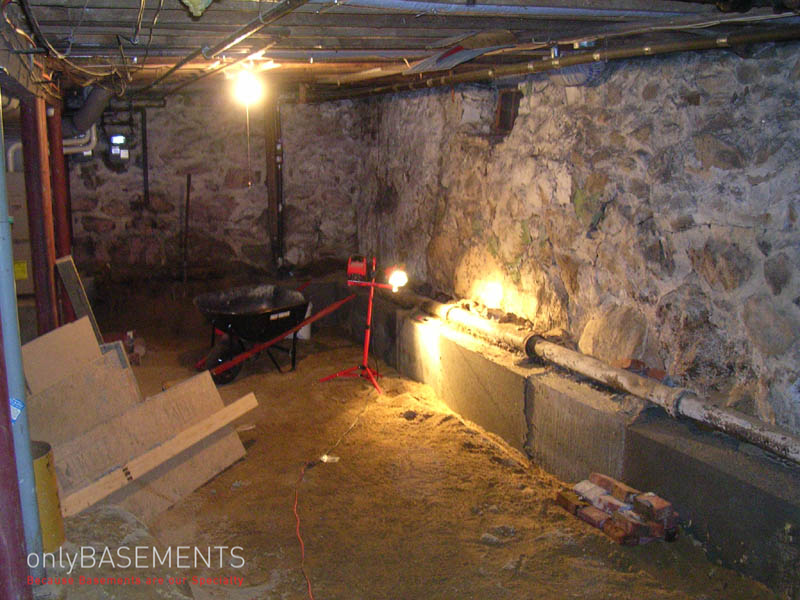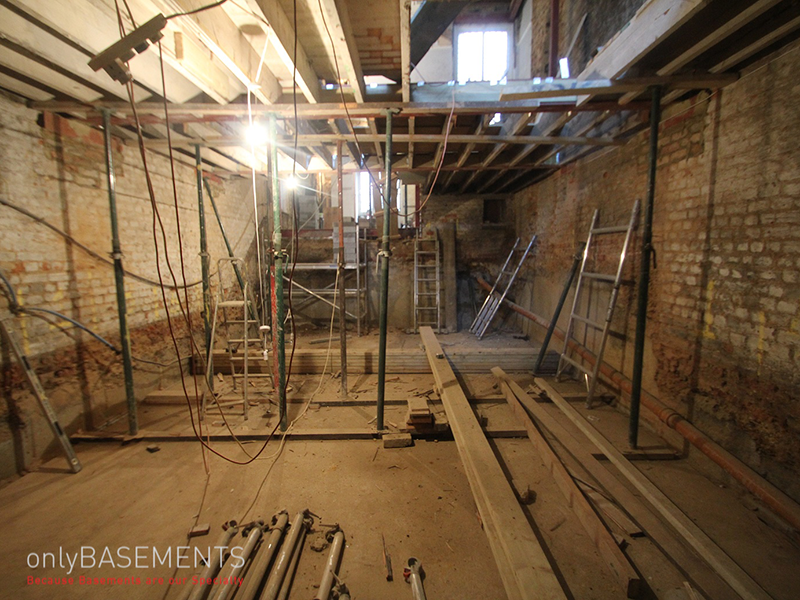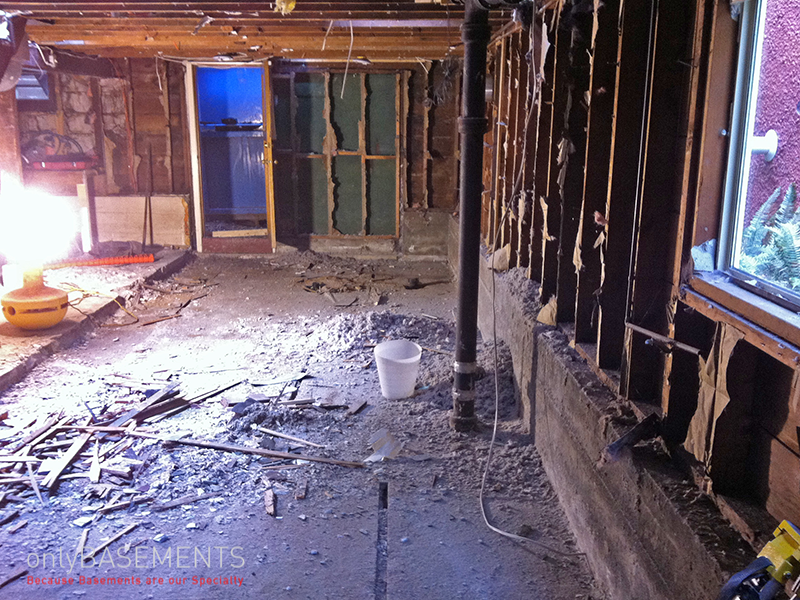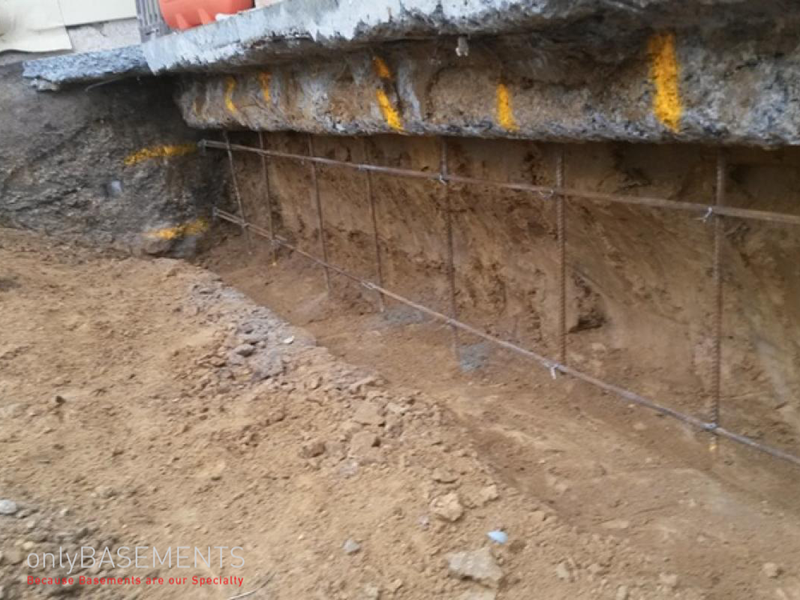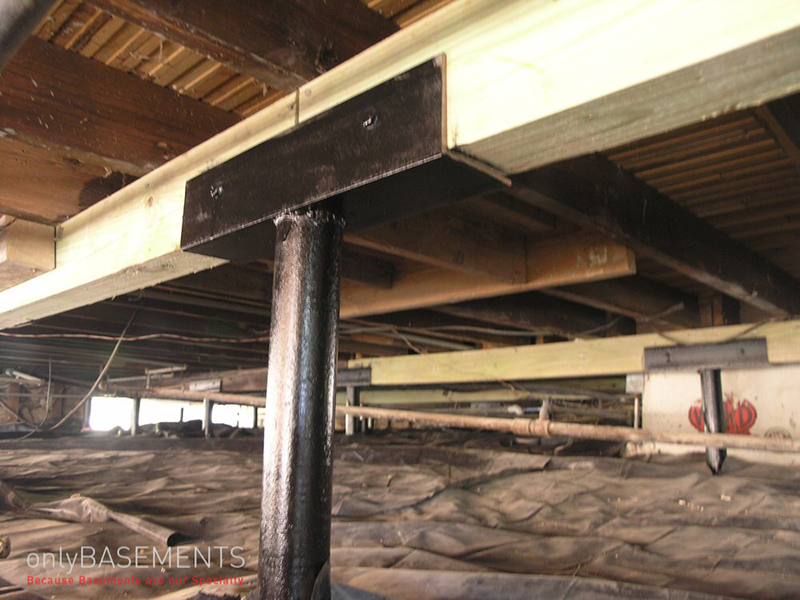Underpinning & Waterproofing
If your basement has low ceilings and feels more like a crawlspace than a comfortable living area, underpinning can completely change the way you experience your home.
Underpinning is the process of safely lowering your basement floor to increase ceiling height, improve functionality, and unlock new possibilities for your living space. Whether you’re planning a luxury basement renovation, building a legal rental unit, or simply looking to add value and comfort to your home, underpinning is the foundational step that makes it all possible.
The process involves digging a sequence of carefully planned holes—called underpinning pits—beneath the existing foundation walls. These pits are filled with high-strength concrete to form new, deeper footings. Once the new footings are set, the soil in the basement can be excavated to the desired depth, creating additional headroom and preparing the space for full-height basement living.
Why Consider Underpinning Your Basement?
Homeowners typically choose to underpin their basement for one or more of the following reasons:
Increased Ceiling Height
Most basements in older Toronto homes have ceiling heights of 6 feet or less—far below the modern standard for livable spaces. Underpinning allows you to increase the ceiling height to 8 feet or more, transforming a cramped basement into a bright, comfortable, and fully usable level of your home.
Legal Rental Unit Potential
To convert a basement into a legal secondary suite in Toronto, minimum ceiling heights (typically 6’5″ after finishes) must be met. Underpinning is often necessary to meet this requirement, opening the door to rental income and greater property value.
Foundation Strengthening
Underpinning doesn’t just deepen your basement—it also strengthens and stabilizes your home’s foundation. This is particularly important in older homes where the original foundation may be shallow or deteriorating.
Waterproofing Opportunities
Once the basement is underpinned and excavated, it presents the perfect opportunity to install modern waterproofing systems, including membranes, weeping tile systems, sump pumps, and drainage upgrades—ensuring your new space stays dry and protected.
Home Expansion Without Adding Floors
If you’re limited by zoning or budget and can’t build an addition above ground, underpinning gives you the extra square footage you need—right beneath your feet.
Our Underpinning Process – Safe. Engineered. Efficient.
At onlyBASEMENTS, we follow a highly detailed and structurally sound process to ensure your home is protected throughout every stage of the underpinning project.
Site Assessment & Engineering Analysis
Every underpinning project begins with a thorough evaluation of your home’s structure. Our in-house engineer inspect your foundation, assess soil conditions, and evaluate any risks. We take precise measurements of the current ceiling height, wall conditions, and foundation type.
We also consider any planned renovations or design goals to ensure the underpinning will accommodate your future basement layout, plumbing, and HVAC needs.
Permit Application & Architectural Drawings
Underpinning is a major structural alteration and requires a building permit in Toronto. Our team handles the entire application process for you—including engineering reports, architectural drawings, and coordination with the City of Toronto.
We ensure that all documentation complies with the Ontario Building Code and local zoning bylaws, avoiding delays and ensuring full legal compliance.
Sequential Digging of Underpinning Pits
Once permits are approved and preparations are complete, our team begins the physical work. We divide the foundation walls into sections (or “pins”) and excavate them in a precise, alternating sequence. This maintains the structural stability of your home throughout the process.
Each pit is filled with concrete to create a new footing beneath the existing one, effectively extending your foundation deeper into the ground. After the concrete has cured and been inspected, we move to the next section, repeating the process until the entire perimeter is complete.
Soil Excavation & Floor Lowering
With the underpinning complete, we excavate the interior basement floor to the desired depth. The new sub-floor is graded and prepped for plumbing rough-ins, drainage systems, and waterproofing installation.
This is also when we typically install any required upgrades to sump pumps, backwater valves, or interior drainage systems—making your new basement not only taller but also better protected against moisture and flooding.
Pouring the New Basement Slab
The final stage involves pouring a new concrete slab floor, reinforced for durability and ready to support your finished basement. We level and smooth the surface, leaving it prepped for insulation, flooring, and further finishing.
Interior Waterproofing
At onlyBASEMENTS, we specialize in comprehensive, basement interior waterproofing that protect homes from below-grade moisture intrusion and structural degradation. With decades of collective experience working on Toronto’s aging housing stock, our team understands the unique challenges posed by porous foundation materials, high water tables, and evolving building codes. Whether part of a complete basement renovation, an underpinning project, or a standalone solution, waterproofing systems are architecturally integrated and technically engineered to ensure long-term durability, health, and comfort. Interior waterproofing is often the preferred solution for finished basements or where exterior access is restricted. We install and maintain high-efficiency sump pump systems to manage collected water and prevent flooding.
Ready to Reimagine Your basement space?
Let onlyBASEMENTS lead the way—with clarity, care, and expertise.
One team. One clear plan. One point of accountability.
Contact us today to schedule a consultation and discover what your basement can become.

